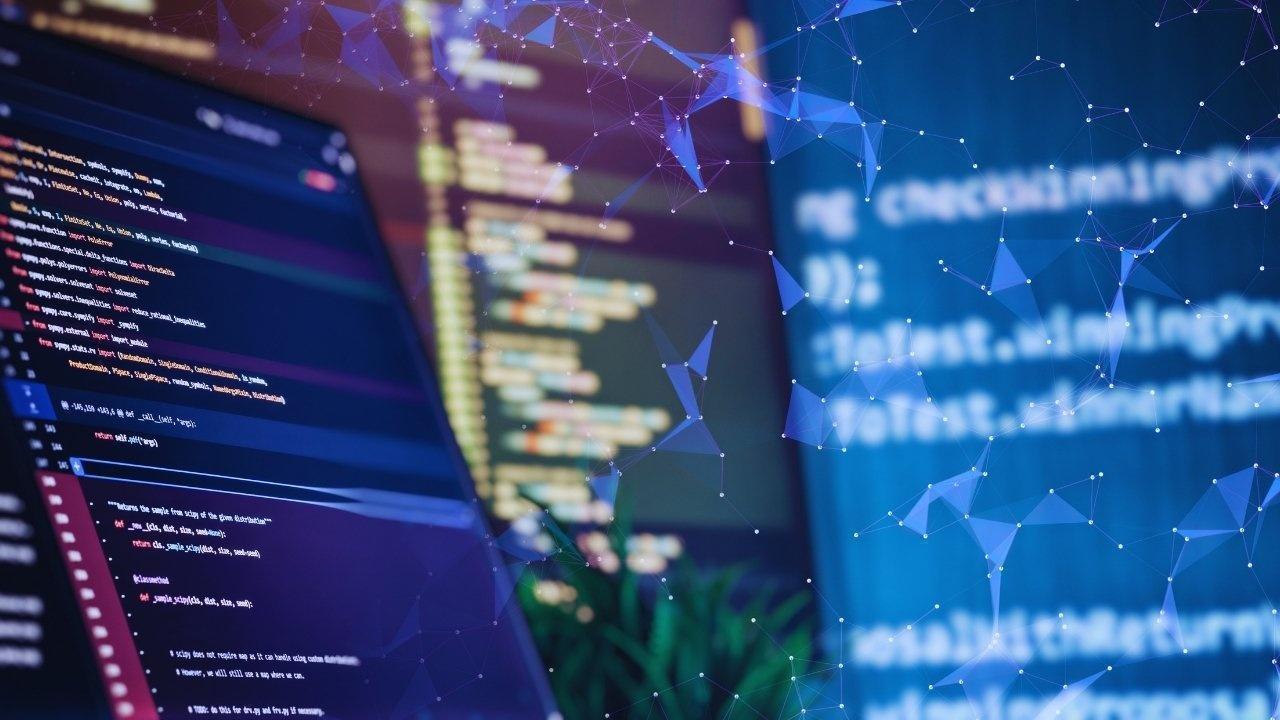
Join 10k+ people to get notified about new posts, news and tips.
Do not worry we don't spam!

Post by : Anis Farhan
By 2025, AI-generated code has evolved from a novelty to a standard practice among developers. Many utilize tools that can auto-complete tasks, propose algorithms, or generate entire modules. Current estimates suggest that a sizable fraction of new coding efforts across various sectors is created or significantly influenced by AI. This evolution promises not only expedited delivery and reduced repetitive tasks but also allows engineers to concentrate on more valuable activities.
However, it’s crucial to recognize that enhanced speed does not always equate to safety, maintainability, or effective architecture. As development teams push forward, they often uncover the associated trade-offs. The current focus must not solely be on AI’s coding capabilities, but also on how effectively it integrates with long-term software quality, secure systems, and human workflows.
AI-generated code presents clear advantages in specific scenarios that significantly enhance outcomes.
AI excels in well-defined, repetitive tasks—like crafting standard CRUD interfaces, generating tests, or scaffolding infrastructure code. Developers often note substantial time savings for such tasks, as the AI handles most of the mechanical workload while allowing humans to review and refine.
For startups, internal tools, or initial prototypes, the swift output from AI-generated code is a game-changer. Developers can rapidly iterate, test concepts, create minimally viable applications, and validate ideas before committing to comprehensive architecture. The model of “draft then refine” becomes practical.
AI tools are proficient in generating test stubs, helper functions, and even documentation comments. These auxiliary tasks, often time-consuming but lacking significant creative value, can be automated to free developers for more challenging design tasks.
AI serves not to replace developers but as a multiplier of their productivity. Teams that adopt AI often find higher output—developers write more lines of code, lessen mundane tasks, and focus on design, optimization, and overall user experience.
Despite its strengths, there are critical scenarios where AI-generated code fails to deliver the anticipated benefits and introduces risks.
Large systems, distributed services, intricate interdependencies, and specific domain logic can be challenging for AI. While code generation tools might produce plausible outputs, they often lack awareness of broader architectural principles, team conventions, or long-term maintainability issues.
Research indicates that numerous AI-generated code snippets can harbor vulnerabilities, employ poor security practices, or utilize outdated APIs, often leading to logic that compiles yet fails in edge cases. What appears to be an immediate win might turn into technical debt if not rigorously reviewed.
AI tools do not genuinely grasp business logic, user experiences, or unique organizational requirements. They can misinterpret prompts, create nonexistent dependencies, or produce code that superficially fits but falters under real-world scrutiny. Developers who rely solely on AI outputs without proper review expose themselves to risks.
The long-term maintenance of generated code can pose challenges. If teams do not thoroughly understand the AI-generated outputs, debugging becomes complex, accountability is diluted, and code readability issues arise. Several teams report that saving time upfront can lead to increased effort during subsequent refactorings.
This emerging term describes instances where developers unduly depend on AI suggestions, accept outputs without comprehension, experiment without safeguards, and ultimately create unstable systems. While this method may hasten initial phases, it often overlooks vital testing, reviewing, and governance measures, resulting in slow degradation over time.
To optimize AI-generated code’s effectiveness, teams ought to maintain a balanced perspective.
Be strategic about where AI-generated code is implemented. It should be reserved for contexts where the benefits are clear: small modules, prototyping, and generating tests. Avoid depending on it for critical system logic without thorough vetting.
Every AI-generated code segment must undergo traditional quality assurance processes, including code reviews, static analysis, security audits, and integration testing. With AI speeding up code production, human oversight is still needed to ensure safety, readability, and maintainability.
Employ tools to assess vulnerabilities, outdated libraries, or fictitious packages. Confirm that AI-recommended dependencies are legitimate, align with compliance requirements, and do not usher in supply chain threats. Even a single erroneous or malicious dependency can jeopardize the entire system.
Generated code should not turn into a “black-box” scenario. Developers must grasp the outputs, comprehend their purpose, understand their integration within the wider system, and know how they will be sustained. Ownership ensures accountability and long-term viability.
View AI-generated code as a collaborative tool or initial draft, not as the final solution. Developers should remain the architects, maintainers, and decision-makers in the process. Leverage AI to enhance speed without undermining the human element.
Current empirical research and industry statistics reveal clearer insights into AI code generation’s effectiveness and areas requiring caution.
Surveys indicate robust adoption among developers: numerous teams employ multiple AI code generation tools, with many claiming productivity improvements for straightforward tasks.
However, controlled research results hint that for complex or unfamiliar codebases, developers utilizing AI may require more time due to necessary reviews and debugging efforts.
Security assessments consistently show that AI-generated code reveals a higher incidence of vulnerabilities versus the average human-written output, emphasizing caution.
Return on investment evaluations show that disciplined implementations of AI code generation have led to significantly reduced payback times, while unregulated use diminishes potential gains.
Effectively collaborating with AI tools has now become part of a developer’s skill set. This includes prompt engineering, reviewing generated code, debugging AI outputs, and ensuring their safe integration into existing frameworks. The focus shifts from crafting every code line to overseeing, guiding, and improving AI outputs.
Teams must refine their workflows: embedding AI review phases, observing how generated code affects maintainability, and forming policies regarding AI usage (where to apply it and where not to). Metrics should encompass speed, code quality, defect rates, and long-term maintenance considerations.
Organizations integrating AI code generation must take a comprehensive approach: What governance structures will be in place? How to assure security and adherence to guidelines? What training is necessary? How to measure success beyond mere code count and speed? The key narrative shifts from mere swiftness to sustainable delivery.
What lies ahead for AI code generation and where should attention be directed?
Developing models are likely to improve suggestion quality and context awareness, even as the gap in “understanding” persists.
Enhanced integration with development tools, testing frameworks, and CI/CD systems will ease workflow and boost security.
Rising regulatory demands concerning AI-generated software, security liabilities, and code origins will notably influence how organizations implement these technologies.
The role of developers will continue shifting towards higher-level design, architecture, review, and the ethical dimensions of code generation.
Organizations that perceive AI-generated code as a strategic asset, rather than a mere gadget, will differentiate themselves.
AI-generated code stands as a pivotal player in today’s software development landscape, offering legitimate productivity enhancements in appropriate contexts—especially for repetitive tasks, prototyping, and support code generation. Nevertheless, these improvements do not come without potential downsides. Simply prioritizing speed can jeopardize security, maintainability, or architectural integrity.
Ultimately, the optimal strategy lies in a disciplined approach: utilize AI when relevant, meticulously review all outputs, embed them within sound workflows, and train human operatives for continuous oversight. By doing this, teams can harness the best of AI code generation while mitigating risks associated with its shortcuts.










Paramount+ to Stream PBR’s 'Unleash the Beast' in New Five-Year Deal
Paramount+ will stream PBR’s 'Unleash the Beast' across the U.S. starting this December under a five

Zohran Mamdani Clinches NYC Mayoral Seat as Victory Speech Blends Politics and Bollywood
Zohran Mamdani won New York City's mayoral race, becoming the city's first Muslim and South Asian ma

India Wins First Women’s World Cup 2025 Title
India lifts its maiden Women’s World Cup 2025 title! Harmanpreet Kaur’s team stuns South Africa in a

Manuel Frederick, 1972 Olympic Bronze Goalkeeper, Dies at 78
Manuel Frederick, a member of India’s 1972 Olympic bronze hockey team, has died in Bengaluru at 78 a

Muhammad Hamza Raja Wins IFBB Pro Card Puts Pakistan & UAE on Global Stage
Pakistani bodybuilder Muhammad Hamza Raja earns IFBB Pro Card in Czech Republic, showcasing Dubai’s

Shreyas Iyer’s Recovery Underway After Spleen Laceration in Sydney ODI
Shreyas Iyer is recovering after a spleen laceration sustained while taking a catch in the Sydney OD